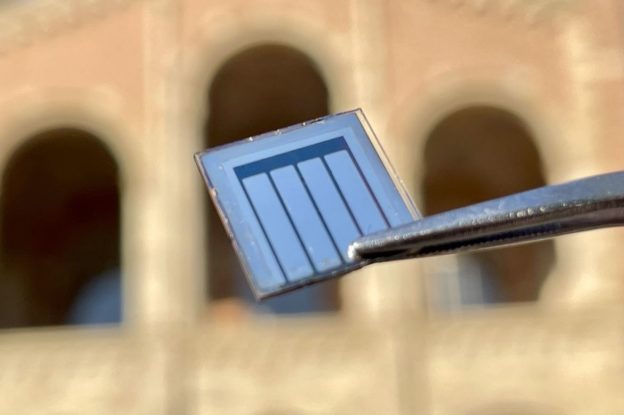
In order to develop solar panels with a lower production cost and a higher conversion efficiency, scientists have been constantly studying perovskite solar, and are dedicated in prolonging the material’s resistance to light and heat. US scientists have recently achieved breakthroughs by discovering that halide perovskite is not only resistant to light and heat, but can also convert light to electricity effectively.
The current common silicon solar cells are higher in production cost, and require a high-temperature and vacuum environment, which is why scientists are targeting the manmade material halide perovskite that is cheaper than silicon. Theoretically speaking, perovskite solar materials are easier in obtainment, and require fewer energy throughout the simpler production process.
Perovskite, however, degrades under the exposure of light and heat, which is a major flaw for solar panels that are solely tasked to absorb sunlight.
University of California, Los Angeles (UCLA) has thus proposed a new solution, which is adding a trace amount of neodymium ions. Halide perovskite is able to convert light to electricity is attributable to a repeated cube grid structure. These structures are integrated through ions that carry opposite charges. It is just that negatively charged ions would bounce out from light and heat, then damage the crystal structure and lower energy conversion.
The research team then targeted neodymium used in microphones and glasses. It carries three positive charges, and helps with fixating negatively charged ions after being embedded in the perovskite crystal. Research staffs added roughly 8 neodymium ions in each of the 10,000 perovskite molecules, and then tested how the material performed in solar cells.
As pointed out by the experiment, the new material retained about 93% of conversion efficiency after continuous illumination for more than 1,000 hours under the maximum power, while standard perovskite solar cells in comparison had lost 50% of conversion efficiency after 300 hours. The team also continuously irradiated the solar cell without any power-consuming equipment in order to accelerate perovskite degradation, where neodymium perovskite equipment had maintained a conversion efficiency of 84% after more than 2,000 hours, whereas standard perovskite had stopped working.
The team, in order to test out its high-temperature resistance, had also heat up the solar cells to 82°C. The standard perovskite cell was unable to convert light afterwards, while the neodymium perovskite cell was able to retain about 86% of efficiency after more than 2,000 hours.
The team has confirmed that neodymium helps with material protection. Yang Yang, researcher at the NanoSystems Institute, believes that this study would facilitate the entry of perovskite solar into the market in the next 2-3 years, and perovskite cells will change the game by being mass produced with ways that cannot be attained by silicon. Yang added that they have added an additive that improves the performance of the materials.